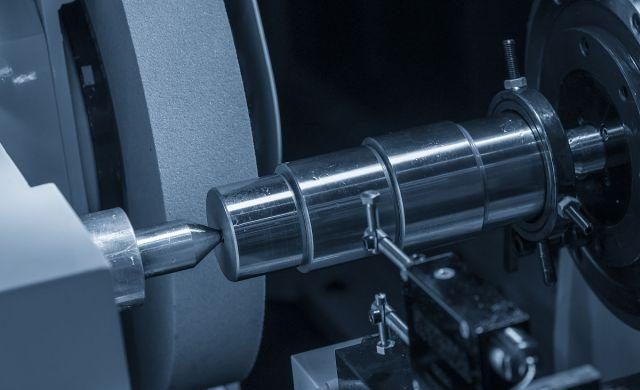In the vast world of materials science and engineering, “steel” is not a singular entity but a sprawling family of iron-based alloys, each with unique characteristics. For designers, engineers, and manufacturers, one of the most fundamental decisions revolves around selecting the right category of steel for a specific job. The choice often boils down to two primary groups: carbon steel and alloy steel.
While both are foundational materials that have built our modern world, their differences in composition, performance, and cost are significant. Choosing the wrong one can lead to premature failure, unnecessary expense, or over-engineered products. This guide provides a comprehensive comparison to help you determine which steel is the optimal choice for your application
What Is Carbon Steel?
Carbon steel is primarily composed of iron and carbon, with only trace amounts of other elements. Carbon steel in particular is defined by a presence of predominantly carbon. Carbon steel is typically grouped into three main categories based on the level of carbon content:
Low Carbon Steel (< 0.30% Carbon):
Also known as mild steel, this is the most common and least expensive form. Its low carbon content makes it ductile, highly formable, and easily weldable. However, it has relatively low strength and cannot be significantly hardened through heat treatment.
Typical Uses: Structural beams, automotive body panels, pipes, fasteners, and general fabrication.
Medium Carbon Steel (0.30% – 0.60% Carbon):
This category offers a balanced combination of strength, ductility, and wear resistance. Its key advantage is its ability to be heat-treated (quenched and tempered) to achieve a significant increase in hardness and strength.
Typical Uses: Gears, axles, crankshafts, couplings, and machinery components that require a good balance of strength and toughness.
High Carbon Steel ( > 0.60% Carbon):
Often called “carbon tool steel,” this is the hardest and strongest of the carbon steel family. This hardness comes at the cost of reduced ductility and weldability. When heat-treated, it becomes exceptionally hard and resistant to abrasion.
Typical Uses: Springs, cutting tools (drills, blades), high-strength wire, and dies.

What is Carbon Steel?
Alloy steel takes the fundamental iron-carbon recipe and enhances it by intentionally adding other elements—known as alloying elements—to refine its properties for more demanding applications. These additions can transform the steel, creating materials that are stronger, tougher, and more resistant to wear and environmental factors than their carbon steel counterparts.
The effect of each alloying element is specific and allows for the precise tailoring of the steel’s final characteristics:
Chromium: Increases hardness, toughness, and wear resistance. In concentrations above 10.5%, it is the primary element responsible for creating stainless steel, which provides exceptional corrosion resistance.
Nickel: Significantly improves toughness, particularly impact strength at low temperatures. It also increases hardenability and contributes to corrosion resistance.
Molybdenum (Moly): Enhances strength, especially at high temperatures (improving “creep resistance”). It also increases hardenability and weldability.
Manganese: In higher concentrations than in carbon steel, it increases hardness and wear resistance without sacrificing toughness. It is a key element for improving hardenability.
Vanadium: Promotes a fine grain structure during heat treatment, which increases overall toughness and strength. It also enhances wear and shock resistance.
Tungsten: Creates a very hard, stable carbide, allowing the steel to maintain its hardness at very high temperatures, making it essential for high-speed cutting tools.
Head-to-Head Comparison: Key Performance Metrics
| Property | Carbon Steel | Alloy Steel |
| Strength & Hardness |
Good, directly proportional to carbon content. Can be significantly hardened through heat treatment (medium/high carbon). |
Superior. Can be engineered through alloying and heat treatment to achieve exceptionally high strength-to-weight ratios and hardness levels (e.g., 4140 chromoly steel). |
| Toughness |
Generally good, especially in low-carbon grades. However, high-carbon steel can be brittle after hardening. |
Superior. Alloying elements like nickel and manganese are specifically added to enhance toughness and impact resistance, preventing fracture under sudden loads. |
| Corrosion Resistance |
Poor. Rusts easily and requires a protective coating (paint, galvanizing, or oil) for nearly all applications. |
Good to Excellent. While not all alloy steels are “stainless,” many offer improved corrosion resistance. Stainless steels (a subset of alloy steels) are the definitive choice for corrosive environments. |
| Wear Resistance |
Fair to Good. High-carbon grades can be hardened to resist wear, but performance is limited. |
Excellent. Alloying elements like chromium and vanadium form extremely hard carbides within the steel matrix, providing superior resistance to abrasion, erosion, and wear. |
| High-Temperature Performance |
Poor. Begins to lose significant strength at temperatures above 250°C (480°F). |
Excellent. “Chrome-moly” steels (like 4130/4140) and other alloys are designed to retain their strength and resist deformation (creep) at elevated temperatures. |
| Cost |
Low. Its simple composition and high-volume production make it the most cost-effective choice for a wide range of applications. |
High. The cost of alloying elements, combined with more complex processing and heat treatment cycles, makes alloy steel significantly more expensive. |
Making the Right Choice for Your Application
The decision between carbon steel and alloy steel should be driven by a clear-headed analysis of application requirements versus cost.
You should choose Carbon Steel when:
Cost is a primary design constraint. For bulk materials or general-purpose parts, carbon steel is almost always the more economical option.
Extreme performance is not required. If the component is not subjected to extreme loads, high temperatures, or a corrosive environment, carbon steel is perfectly adequate.
Formability and weldability are critical. Low-carbon steel’s excellent ductility makes it ideal for applications involving stamping, bending, and welding, such as in structural fabrication and automotive chassis.
You should choose Alloy Steel when:
A high strength-to-weight ratio is essential. In aerospace, high-performance motorsports, and advanced machinery, alloy steels provide the necessary strength without a prohibitive weight penalty.
The application involves extreme conditions. This includes high-impact or shock loads (e.g., landing gear, industrial gears), high operating temperatures (e.g., pressure vessels, engine components), or high-wear scenarios (e.g., mining equipment, dies).
Corrosion is a concern. For any part exposed to moisture, chemicals, or outdoor elements without a reliable coating, a stainless or other corrosion-resistant alloy steel is necessary to ensure longevity.
Conclusion
Ultimately, the debate is not about which steel is “better” but which is “best suited” for the task at hand. Carbon steel is the reliable, cost-effective workhorse of the industry, forming the backbone of infrastructure and everyday products. Alloy steel is the high-performance specialist, custom-engineered to withstand the most demanding conditions where failure is not an option. A thorough understanding of their fundamental differences is crucial for sound design, efficient manufacturing, and the creation of safe, reliable, and cost-effective products.



